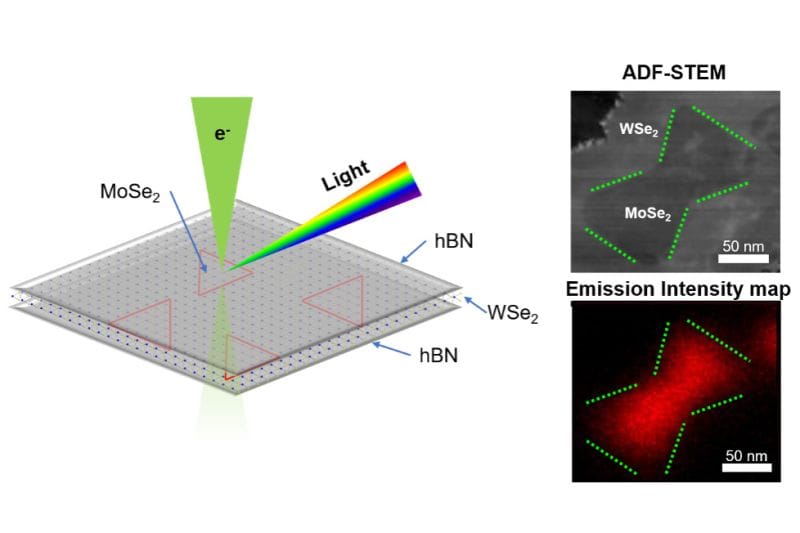RSS feed source: National Science Foundation
Americans spend a lot of time on their screens. The images on those screens are made of pixels — tiny dots that represent a single point of color. Scientists from Penn State, including NSF Graduate Research Fellow Nicholas Trainer, recently discovered a process that can make the images on phones, monitors and TVs even brighter.
The Penn State research shows that light emitted from 2D materials can be changed by embedding a second, very small (80,000 times smaller than the width of a human hair) 2D material inside them, called a nanodot. By controlling the size of the nanodot through a process called quantum confinement, scientists can change the color and frequency of the emitted light.
RSS feed source: National Science Foundation
Scientists develop new impact-resistant material based on the exoskeleton of the mantis shrimp.
Click this link to continue reading the article on the source website.
RSS feed source: National Science Foundation
The NSF-DOE Vera C. Rubin Observatory, a major new scientific facility jointly funded by the U.S. National Science Foundation and the U.S. Department of Energy’s Office of Science, released its first imagery today at an event in Washington, D.C. The imagery shows cosmic phenomena captured at an unprecedented scale. In just over 10 hours of test observations, NSF-DOE Rubin Observatory has already captured millions of galaxies and Milky Way stars and thousands of asteroids. The imagery is a small preview of Rubin Observatory’s upcoming 10-year scientific mission to explore and understand some of the universe’s biggest mysteries.
“The NSF-DOE Vera C. Rubin Observatory demonstrates that the United States remains at the forefront of international basic science and highlights the remarkable achievements we get when the many parts of the national research enterprise work together,” said Michael Kratsios, director of the White House Office of Science and Technology Policy. “The Rubin Observatory is an investment in our future, which will lay down a cornerstone of knowledge today on which our children will proudly build tomorrow.”
“NSF-DOE Rubin Observatory will capture more information about our universe than all optical telescopes throughout history combined,” said Brian Stone, performing the duties of the NSF director. “Through this remarkable scientific facility, we will explore many cosmic mysteries, including the dark matter and dark energy that permeate the universe.”
“We’re entering
Click this link to continue reading the article on the source website.
RSS feed source: National Science Foundation
Microorganisms with extreme abilities have laid the groundwork for decades of biotechnologies from the PCR technique that enables amplification of DNA for diagnostics and drug development to the gene editing tool CRISPR, and now researchers supported by the U.S. National Science Foundation have found a trove of these microbes in a somewhat unlikely location — the Gowanus Canal in Brooklyn. The team identified more than 450 species with over 60 different biochemical pathways to deal with pollutants and 1,171 genes that can aid in processing heavy metals, offering potential for bio-based and cheaper methods of industrial clean-up, the costs of which are estimated to be more than $645 billion.
The Gowanus Canal is a contaminated waterway in Brooklyn that has high concentrations of petrochemicals and heavy metals. The researchers, including Sergios-Orestis Kolokotronis of the SUNY Downstate Health Sciences University, collected soil samples at 14 locations along the 1.8-mile-long canal and deep sediment core samples and analyzed them using genomic sequencing and bioinformatics. Understanding the genetic sequences and metabolic pathways of the organisms identified will allow researchers to develop faster methods of what the microbes can do naturally.
“We have seen the power of extremophiles used in medicine and industry, and this new analysis expands the biological adaptations we can harness for societal benefit,” said Joanna Shisler, program director in the NSF Directorate for Biological
Click this link to continue reading the article on the source website.



